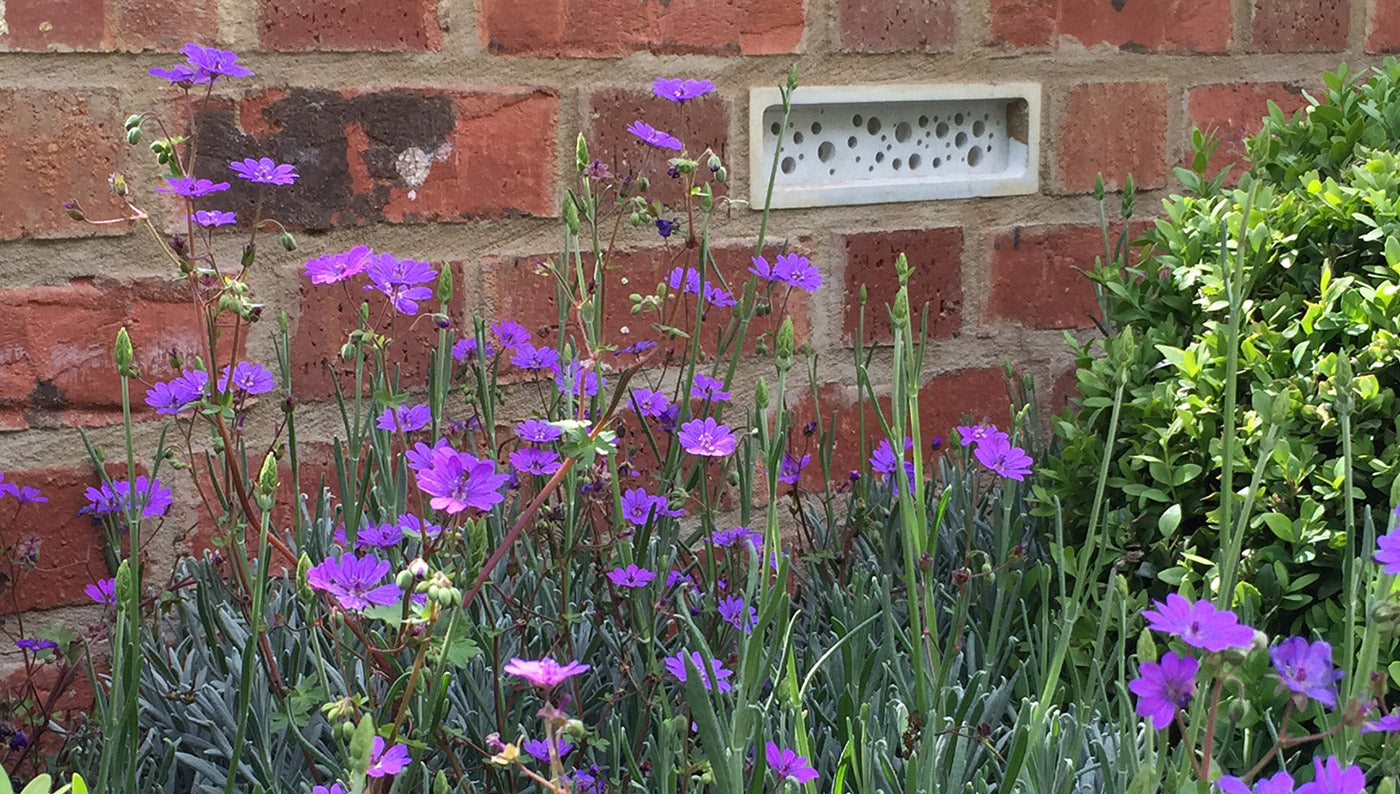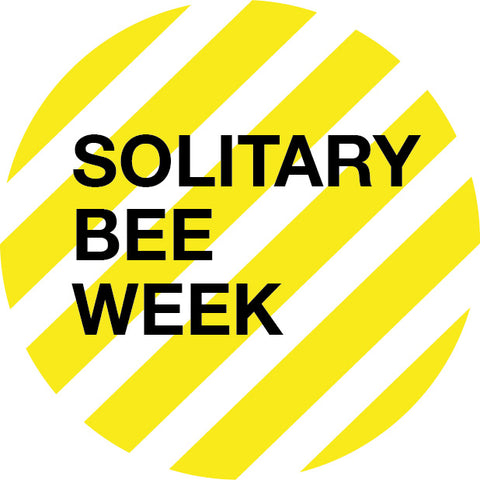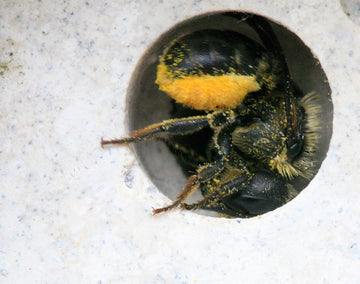5 things you need to know about solitary bees.
1. Solitary bees are different from honey bees and bumble bees.
Solitary bees are not simply bees who have left the hive and are now alone. There are over 200 species of solitary bee and, as the name suggests, they live alone, although in truth they often nest close to one another. They do not produce honey, do not have a queen and do not live in hives.
 2. Pollinators are responsible for around a third of all food we eat.
2. Pollinators are responsible for around a third of all food we eat.
Pollinators, including solitary bees, carry out a vital role in pollinating our crops, and also flowers and trees. In some parts of China pollination is already being undertaken by hand using paintbrushes because there are no bees left to do it naturally. We used to think that honey bees were the biggest contributors to crop pollination but that simply isn't the case today, all types of bees are important. 
3. Solitary bees are non-aggressive.
Because solitary bees do not have a store of honey to protect they are non-aggressive, meaning they are safe around pets and children. The males generally have no sting and the females will only sting if handled roughly or trod on. Perfect therefore to encourage into your garden or allotment or new build development.

4. They have a short, but busy, life cycle.
Generally (across the species) solitary bees emerge from their nests in the spring. Males emerge first and, after feeding, they hang around the nest waiting for the females. Once mating is complete the males die fairly quickly, what a life! After mating the females will begin the process of nesting, selecting a suitable site, constructing the nest and laying anything between 1 and 20 eggs. The eggs will hatch into larvae, which feed on pollen and nectar that the female has stored within each nest. The larvae develop and pupate, emerging the following spring (or later in the year depending on species) and repeating the cycle.
5. Their habitat is under increasing threat.
There are many factors in declining solitary bee numbers, including increased use of chemicals in farming, fewer wildflower meadows, and less suitable habitat. As fields become bigger we lose more hedgerows, which used to provide ample homes to a wide range of wildlife. Also as we build more and more properties and landscape our gardens we unwittingly destroy habitat and nests as we do so. We developed the bee brick as a means of increasing consideration for the habitat of cavity-nesting solitary bees, by creating a possible nesting site for them in each new development, garden or wall.

Solitary Bee Week
If you'd like to know more about Solitary Bees or fancy helping us spread the word about these brilliant pollinators then check out Solitary Bee Week, a week of action and awareness we organised to raise awareness of these 'other' bees.



41 comments
Ya the bee is alone but it likes to live in a small haus
Certain I can tell you this bee is not angry. is very calm bee., it may be big but is harmless,
i leave them alon, why worry over buzzing vee?
We have a solitary bee who has set up home in the top of our front door. There is a drain hole in the top of the door and the bee has been busy for the past 3 days, flying in and out whether the door is open or not. We are based in the Loire Valley, France and have wooden shutters over our windows yet the bee has chosen the front door!
Hi,
I live in a Park home and have noticed a solitary bee entering a window frame underneath where a screw should be. As it’s a upvc window in a wooden building can they do any harm?
Love all bees and have lots of bumble and honey bees on my lavender, budlia and other pollinators favourites I have planted.
Regards
Tricia
Hi – earlier this year I had solitary bees going in and out of holes in the pointing of one of my walls – this wall is due to be re-pointed soon and I wonder if there will be any bees or larvae still in the holes – if so is there any way I can ensure the holes are empty before work begins?
Thanks, Pat lees.
Hi Bernice, Great that you’re keen to help look after the bees. This article might be useful to share with any potential house buyers, so they know a little more and hopefully will want to care in the same way you have. https://www.buzzaboutbees.net/mining-bees.html